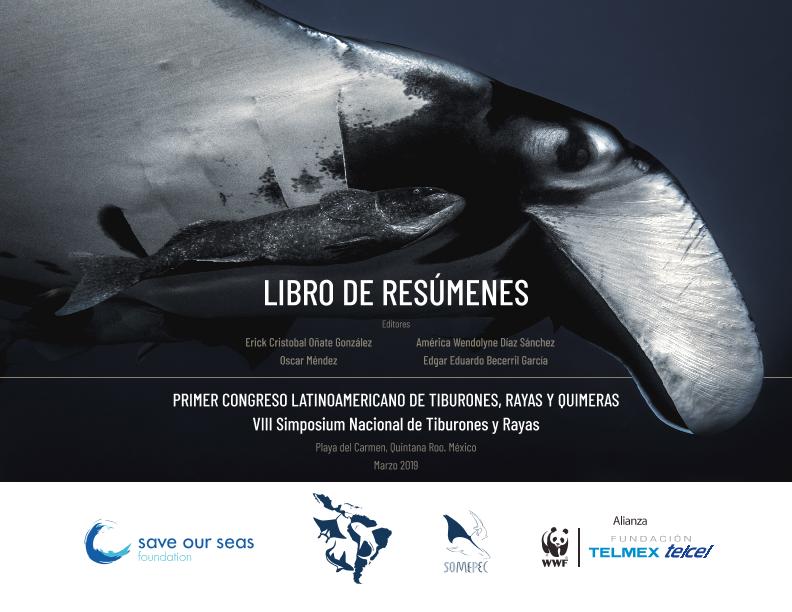Evento
Estudios preliminares de la relación entre la morfología del encéfalo y los patrones ecológicos de los batoideos (Rajidae): La raya marmorada, Sympterygia bonapartii
Colaboradores:
Castillo Géniz, José Leonardo
Tipo del evento:
Congreso
Nombre del evento:
Primer congreso latinoamericano de tiburones, rayas y quimeras y VIII Simposium nacional de tiburones y rayas
Fecha del evento:
25/03/2019
Institución Organizadora:
Sociedad mexicana de peces cartilaginosos;
Título del Libro:
Memorias del primer congreso latinoamericano de tiburones, rayas y quimeras y VIII Simposium nacional de tiburones y rayas
Editorial:
Sociedad mexicana de peces cartilaginosos
Idioma:
Español
Clasificación temática:
Resumen
Elasmobranchs are an evolutionarily conserved group, with very high impact on aquatic ecosystems. They are the first group to exhibit brain morphology homologous to those of tetrapods and they are excellent models that provide new perspectives on the evolution of ancestral neural systems link to their habitat. The batoids are unique amongst elasmobrachs that have morphological specializations to a benthic niche. In this context, the aim is this study was to use Sympterygia bonapartii as a study model to describe the brain organization and to explore the relationships between the neuronal organization and the ecological patterns in this group. This species extends from Southern Brazil to Argentina, from shoreline down to 100 m depth and is one of the most disembarked elasmobranch in the commercial harbors. They are oviparous and use mainly the estuarine waters for mating, giving birth and as a breeding ground. This work describes the macroscopical and microscopial morphology of the brain in S. bonapartii. Samples were fixed in Bouin?s fixative in seawater, dehydrated and embedded in Paraplast®. Sections of 5-7 µm were stained with hematoxylin-eosin and Bielschowsky silver stain. Macroscopically, the brain included telencephalon, diencephalon, mesencephalon, smooth unfoliated cerebellum, and a large medulla oblongata. Microscopically, the telencephalon is a solid structure, with groups of granular cells interspersed in a mass of glial cells that conform the nervous tissue. In the diencephalon area, hypothalamus is enlarged and well developed. The pituitary gland is divided into three regions: the rostral and proximal pars distalis, with acidophilic and basophilic cells and a large neuro-intermediate lobe, close to the saccus vasculosus. The cerebellum architecture is similar to other vertebrates. This first brain morphology analysis shows that the pattern of organization in S. bonapartii, agrees with that seen in other Batoids with similar ecological arranges included them in a benthic cerebrotype.
Palabras clave:
SYMPTERYGIA BONAPARTII
,
ENCÉFALO
,
BATOIDEOS
,
PATRONES ECOLÓGICOS
Archivos asociados
Licencia
Identificadores
Colecciones
Eventos(INBIOSUR)
Eventos de INSTITUTO DE CIENCIAS BIOLOGICAS Y BIOMEDICAS DEL SUR
Eventos de INSTITUTO DE CIENCIAS BIOLOGICAS Y BIOMEDICAS DEL SUR
Citación
Estudios preliminares de la relación entre la morfología del encéfalo y los patrones ecológicos de los batoideos (Rajidae): La raya marmorada, Sympterygia bonapartii; Primer congreso latinoamericano de tiburones, rayas y quimeras y VIII Simposium nacional de tiburones y rayas; Playa del Carmen; México; 2019; 157-157
Compartir




